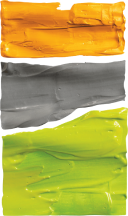Dry Farming
By Rosie FinnWater is a precious resource. Using less or no water is a driver behind most environmentally aware viticulturalists but dry farming can be controversial topic, particularly for those working with light soils.
It is considered a cornerstone of quality viticulture where the vine is “forced” to go deeper in search of moisture and as a result explore its environment. This forms a greater symbiosis between vine and soil, and is seen to be an important factor in the expression of terroir.
Topsoil is somewhat ubiquitous, while deeper strata are more specific to the site, and more likely to produce wines of distinctive character.
Our dry grown management encourages the vine roots, worms and mycorrhizal fungi even deeper into virgin ground. This allows the vines to use water and nutrients that were not previously available, increasing tolerance to rainstorms and drought, and allowing the vines, fruit and wine to more clearly express the terroir .
Dry growing enables us to have bunches with smaller berry size due to the competition for water between the vines and the other plants growing in the vineyard. This small berry size gives more complex, concentrated fruit to deliver to the winery and that produces better wine. Voila!
Of course it’s handy to have soils with good water holding capacity, a climate that offers the odd top-up by means of rain, and a healthy soil to take advantage.



